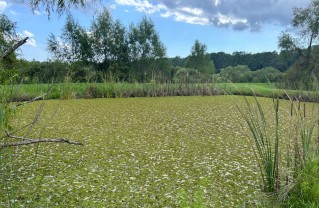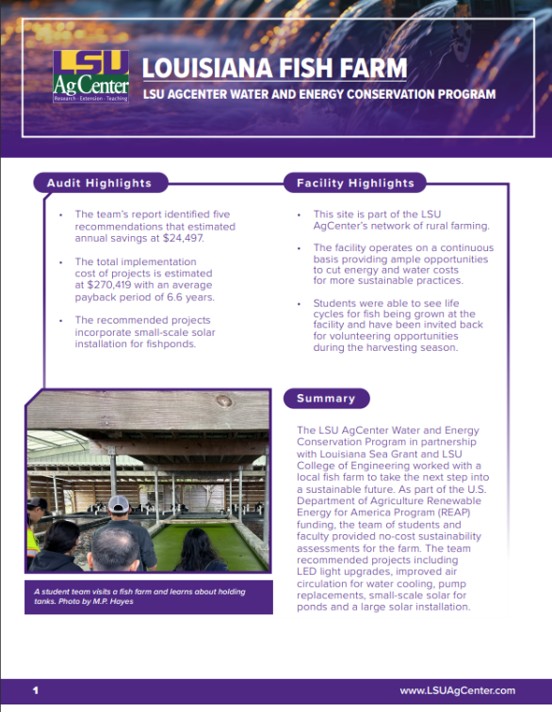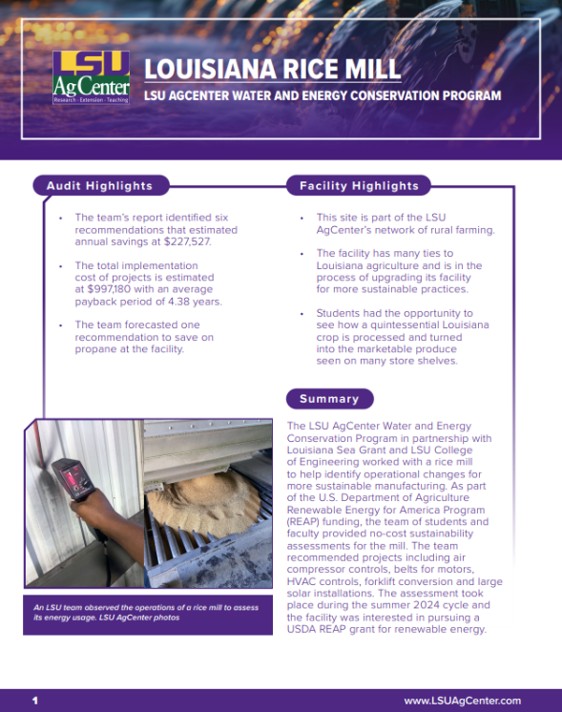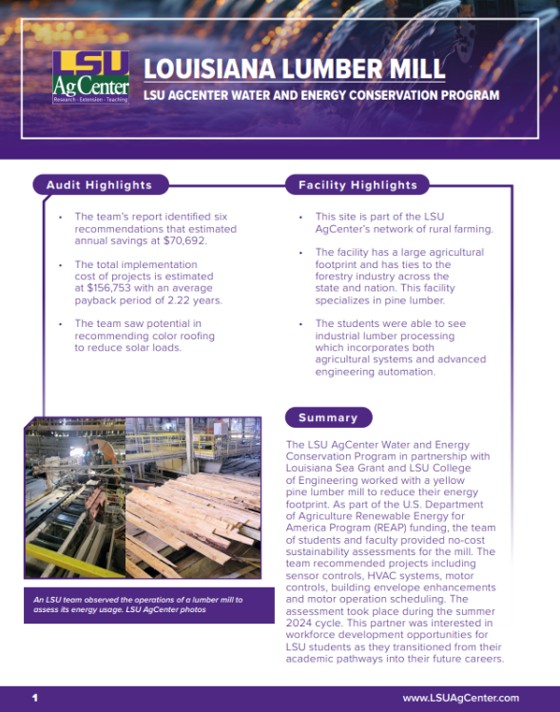Extension Publications
____________________________________________________________________________________________
Water Quality Extension Publications
Better Water Practices: Water Conservation Tips
Water is a valuable resource that sustains everyday life. Take a moment to think about how frequently you use water in your daily routine. Whether you are washing clothes or watering your garden, challenge yourself to find ways to reduce your monthly water consumption. The following ideas can be used to set sustainability goals for water conservation.
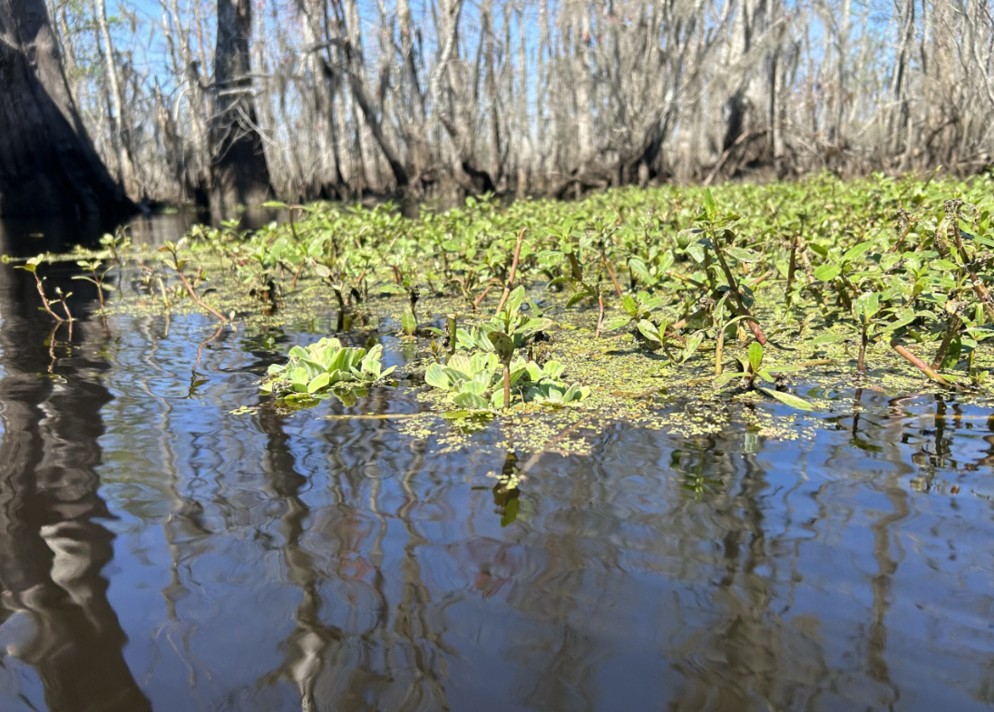
Louisiana Salinity Field Reference for Agriculture
The salinity of groundwater and surface water across Louisiana remains an area of interest for agricultural commodities. Both horizontal (sea level rise and storm surges) and lateral (over-pumping and increased use of aquifers) saltwater intrusion have created a growing concern for tolerance of quintessential Louisiana crops.
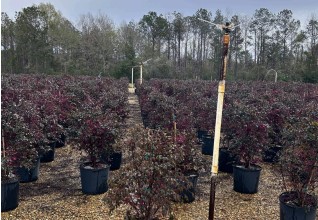
Rainwater Harvesting for Small Nurseries and Home Gardens
Harvesting rainwater is a conservation technique to combat increased water demand, water quality issues and scarcity of water resources. Harvested rainwater can be used for nonpotable purposes, such as irrigation, washing or flushing, and is especially useful under drought conditions. The primary components of planning and implementing harvest designs include rainfall-capturing systems, vessels for water storage and dedicated end-use for the water.

Small-Scale Solar Distillation for Gardeners
Solar distillation uses energy from the sun to separate contaminants and ions (like salts) from water. Untreated, impure water absorbs heat to slowly increase the temperature causing evaporation. Evaporated water is condensed and collected as purified water to be used for irrigation purposes. Solar stills can be designed based on available space and water volume needs.
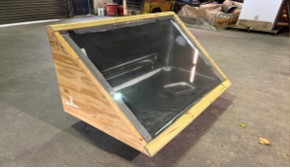
____________________________________________________________________________________________
Think Downstream Water Parameter Series
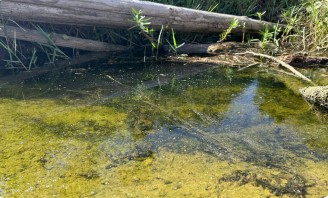
Dissolved oxygen, often referred to as DO, is the oxygen in water that is available to support aquatic organisms like fish and algae. The oxygen in the water can be directly dissolved from the air or produced by aquatic plants during photosynthesis. Many different environmental conditions can affect the amount of DO in the water, which is why DO indicates other pollution and environmental issues.
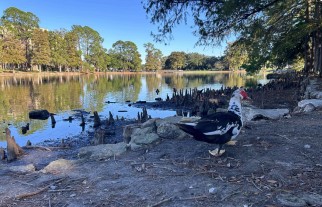
Fecal coliform and Enterococci are types of bacteria commonly found in the intestines of warm-blooded animals, such as humans and cows. In water, their presence is an indicator of fecal contamination, which can include harmful, disease-causing bacteria. These indicators can have impacts on public recreational (swimming and kayaking) and residential areas where there is a risk of exposure to people.
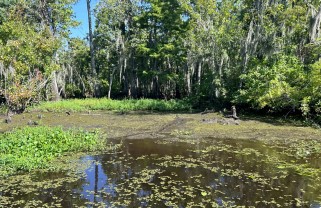
Nitrogen is a key nutrient in water systems and is essential for plant and animal life. Though nitrogen is needed for an ecosystem to thrive, anything in excess can cause impairments. The common forms of nitrogen are nitrate (NO3-), nitrite (NO2-) and ammonium (NH4+). These different forms are present in many types of fertilizers or natural organic matter.
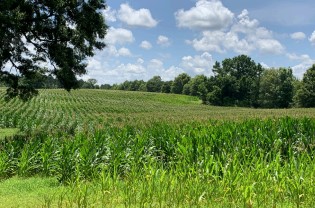
Pesticides are chemicals used to control pests and include herbicides, insecticides, fungicides and rodenticides. Each different pesticide has a unique chemical formula and degradation residuals that can persist in waterways after the compound is broken down. Current market pesticides have active ingredients to reduce the risk to the environment, but exposure and increased concentration may impact ecosystems.
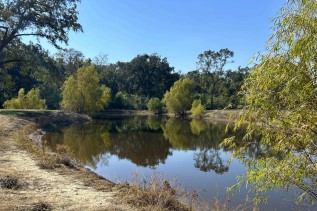
Potential hydrogen (or pH) is a measure of hydrogen ion concentration in water. This indicates how acidic or basic aqueous solutions are on a scale from 0 to 14, with 7 being neutral. Less than 7 on the pH scale is acidic conditions, while above 7 indicates basic conditions. This can be a good indicator of water impairments and environmental hazards.
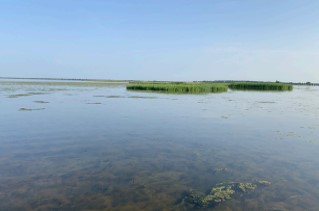
Salinity is the measurement of all dissolved salts in water, which includes mostly chloride, sodium, sulfate, magnesium, calcium and potassium. For water, the most common measurement is for sodium chloride (NaCl). Salinity is reported in concentration at the parts-per-thousand (ppt) level and can be seen in various sources of water including well water, rivers, streams and canals.
Temperature is the thermal energy concentrated in a water source. This energy has a warming or cooling effect on the water. The overall temperature of a water body will influence the metabolic rates and behavior of aquatic organisms playing a critical role in the environmental ecosystems.
___________________________________________________________________________________________
Extension Case Studies
____________________________________________________________________________________________
Septic Factsheet Series
Aerobic Treatment Units Explained
Some of the limited conditions include soil saturation, diverse types of soil, elevation of groundwater and proximity to waterways. Due to these conditions, aerobic treatment or mechanical units are more prevalent for installation. Aerobic treatment units (ATUs) will have similar configurations with a pumping station and chlorine contact chamber before discharge but will operate slightly differently than a conventional system.
Conventional Septic Systems Explained
To reduce the cost of collecting, processing and treating wastewater in some areas, the use of individual septic units or on-site wastewater treatment systems is a method of treating wastewater from household plumbing fixtures (toilet, shower, laundry, etc.) through more natural processes. Also known as decentralized wastewater treatment, these underground units use primary and secondary treatment to treat and disperse small volumes of effluent generated in residential settings.
What Types of Wastewater Do You Generate
One of the largest factors for maintaining proper treatment of a decentralized septic system is the water volume that is flushed through the primary tank. The wastewater effluent is generated by a number of appliances including toilets, showers, sinks, dishwashers and washing machines. Wastewater can be classified as either “gray water” or “black water.”
Effluent Reduction Guidelines: Alternative Treatment and Dispersion Techniques
When conventional absorption fields cannot be used, there are alternative methods for secondary treatment and distribution of effluent that can be utilized. The methods may vary based on parish but will mostly be due to local topography, available space, soil profile and water table elevation. Specific guidelines for alternative treatment and dispersion techniques regulations can be found...
Sanitation Guide for Limited-Use Septic Systems
Geographically, Louisiana’s coastal landscape provides ample opportunities for hunting, fishing, tourism and commercial industries. Though the impact of storms in recent years has dwindled coastal infrastructure and populations, many semipermanent camps or properties host activities throughout the year. A unique aspect of these locations is the wetland or marsh-based soil that lacks a foundation for permanent water infrastructure.
Navigating Floods and Power Outages for Septic Systems
Louisiana has a history of impactful weather events which have negative consequences on infrastructure. Before hurricane season, take stock in preventative maintenance tips and get a checklist ready to get your septic system back online to reduce downstream water quality issues. A key to a healthy, efficient septic unit is a well-maintained system.
Preventative Maintenance Tips and Warning Signs of Septic Issues for Homeowners
Maintenance is key to the efficient performance of any sewage system. By emphasizing proper maintenance and the knowledge to recognize when issues may arise, you can reduce the risk of public health hazards and environmental contamination. To do this, homeowners should understand how the septic configuration operates and where problems can occur in the process.
The following definitions and permit specifications are outlined for the Onsite Wastewater Installers Workshop and come directly from the Public Health Sanitary Code LAC Title 51 Part XIII. This document is meant to be a study guide for installers to become familiar with the terminology outlined by the office of public health.
A septic tank is a watertight tank made of steel concrete, or other approved materials in which the settleable solids settle and are largely changed into liquids or gases by bacterial decomposition. The remaining residue in the tank is a heavy, black semiliquid sludge that must be removed from the tank periodically by a commercial contractor.
A conventional septic system is a primary treatment technique that uses an absorption trench for the secondary treatment of effluent. These trenches can be used where soil conditions are satisfactory, sufficient land space is owned, and it will not cause an issue to public health. The effluent seeps through the aggregate-filled trenches and uses the microbial activity in the soil to convert organic matter from septic tanks into mineral components.
An oxidation pond is a shallow pond designed to treat sewage by the influence of air and sunlight. This pond will serve as a secondary treatment technique and must be preceded by a septic tank for primary treatment. The septic tank feeds partially treated effluent to the oxidation pond, which uses a prolonged retention time for biological interactions of microbial bacteria, air, and sunlight to complete the digestion of harmful substances in the effluent.
A deep-type sand filter bed is another alternative for the secondary treatment of septic tank effluent. The sand filter bed should remain aerobic throughout the treatment process. For aesthetic purposes, the cover of clean, washed, coarse gravel, not to exceed 6 inches in depth over the bed, is permitted. This form of secondary treatment can provide a high level of reduction for effluent nutrients. They are good alternatives for sites with high water tables or that are close to water bodies.
Non-waterborne systems are allowed where a dwelling is not served with water under pressure, thus not allowing for a standard septic system. In these cases, non-waterborne systems are required for excreting disposal but are highly regulated due to the potential risk to public health.
The use of a pumping station is required when the topography or elevation of the site prevents gravity flow of liquid from one location to another. The pumping station can be a part of any orientation septic unit series including conventional septic/ absorption field systems, aerobic treatment units and other configurations using effluent reduction or distribution methods.
Where effluent discharges are required to be chlorinated, a chlorine contact chamber should be used to disinfect the wastewater before distribution. Calcium hypochlorite, labeled for wastewater disinfection, shall be added in sufficient concentrations to maintain a minimum residual of 0.5 ppm total chlorine in the effluent. To achieve the required contact time for chlorine, a baffled chlorine contact chamber shall be used with recommended gallons per day (GPD) capacities
An effluent reduction field is designed as a soil absorption field that will both treat and reduce the amount of effluent that drains from a septic system to the surrounding water courses. Individual sewage systems, with a capacity up to and including 1,500 gallons per day (GPD), that produce a treated off-site effluent shall include an effluent reducer as part of the overall system.
In Louisiana, many conventional septic systems are unsuitable due to environmental conditions such as high water table, soil saturation, contamination potential for surrounding waterways or topography. In these instances, aerobic treatment units are utilized to process wastewater effluent by creating oxygen to break down the organic matter in sewage and promote aerobic bacterial activity. These mechanical systems require regular maintenance to treat effluent efficiently.
A rock-plant filter bed is a type of effluent reduction system that can follow a mechanical plant of high effluent volume. The size of the effluent reduction system installed has to correspond with the recommended size of the sewerage system. These systems use plants and microbes to improve water quality and reduce the volume of water from domestic wastewater treatment.
A spray irrigation system is a type of dispersion system that promotes evaporation and soil infiltration of the effluent. It is highly recommended that effluent from a mechanical septic system be chlorinated in a chlorine contact chamber prior to spray irrigation. This system uses an electric pump where a float switch activates the pump to force the effluent through piping to pop-up or elevated rotating-type sprinkler heads to distribute to the yard.
Alternative Methods of Effluent Reduction
There are additional methodologies of effluent reduction and dispersion that are not prevalent in the state due to lot size, topography or other constraints, but are listed as available options for homeowners and installers. All designs or questions about alternative methods of effluent reduction should submitted to the sanitarian parish manager with approval needed prior to installation.
Louisiana Agriculture Magazine
Fall 2024 - Innovative Floating Photovoltaics (FPV) for Renewable Energy in Agriculture (Page 24)
Summer 2025 - Nuisance to Nutrients: Aquaculture Processors’ Waste to Agricultural Fertilizers (Page 20)
Fall 2025 - Digital Precision Water Technology for Crawfish Research and Extension (Page 32)
Fall 2025 - Bayou Connections: Strengthening Communities Through Water Stewardship in South Louisiana (Page 28)
Fall 2025 - All Water Lead to the Gulf: Expansion of Land and Sea Grant Partnership (Page 18)
Winter 2026 - Experiential Learning Programs for Agricultural Water (Coming Soon)
Lab Newsletters
Water Quality Articles
Winter 2023 - LSU AgCenter's Newly Funded Water and Energy Conservation Program for Agricultural Businesses (Page 27)
Spring 2024 - Rainwater Harvesting for Small Nurseries and Home Gardens (Page 37)
Summer 2024 - Water Quality Factors that Increase Summer Pond Problems (Page 17)
Fall 2024 - Water and Energy: Utilizing Pond Space for Renewable Energy (Page 23)
Winter 2024 - Using Technology to Create Pond Health Profiles (Page 30)
Spring 2025 - Water Movement: Subsurface vs. Surface Pond Oxygenation (Page 33)
Summer 2025 - Pond Buffering Zones to Improve Water Quality (Page 15)
Fall 2025 - Water and Energy Nexus: Floating Solar Panel Review (Page 27)
Winter 2025 - Using Low Pond Water to Your Advantage (Coming Soon)
Summer 2025 - Water Quality Extension Lab Experiential Learning Programs
Quarter 4 (2025) - Correlating Water Quality Parameters in Municipal Waste Stabilization Ponds using Sensor Networks (Page 28)
